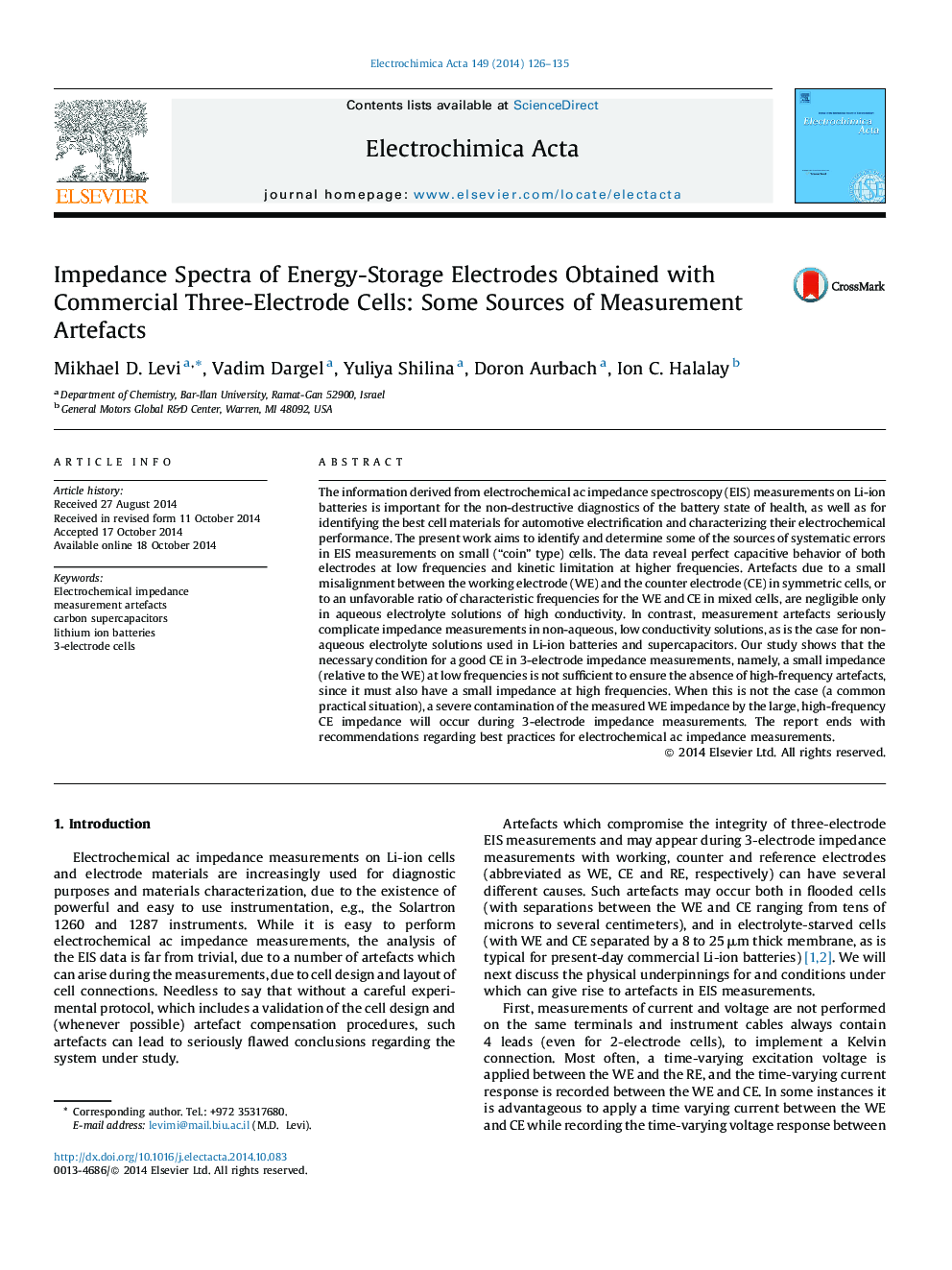| Article ID | Journal | Published Year | Pages | File Type |
|---|---|---|---|---|
| 184944 | Electrochimica Acta | 2014 | 10 Pages |
ABSTRACTThe information derived from electrochemical ac impedance spectroscopy (EIS) measurements on Li-ion batteries is important for the non-destructive diagnostics of the battery state of health, as well as for identifying the best cell materials for automotive electrification and characterizing their electrochemical performance. The present work aims to identify and determine some of the sources of systematic errors in EIS measurements on small (“coin” type) cells. The data reveal perfect capacitive behavior of both electrodes at low frequencies and kinetic limitation at higher frequencies. Artefacts due to a small misalignment between the working electrode (WE) and the counter electrode (CE) in symmetric cells, or to an unfavorable ratio of characteristic frequencies for the WE and CE in mixed cells, are negligible only in aqueous electrolyte solutions of high conductivity. In contrast, measurement artefacts seriously complicate impedance measurements in non-aqueous, low conductivity solutions, as is the case for non-aqueous electrolyte solutions used in Li-ion batteries and supercapacitors. Our study shows that the necessary condition for a good CE in 3-electrode impedance measurements, namely, a small impedance (relative to the WE) at low frequencies is not sufficient to ensure the absence of high-frequency artefacts, since it must also have a small impedance at high frequencies. When this is not the case (a common practical situation), a severe contamination of the measured WE impedance by the large, high-frequency CE impedance will occur during 3-electrode impedance measurements. The report ends with recommendations regarding best practices for electrochemical ac impedance measurements.
